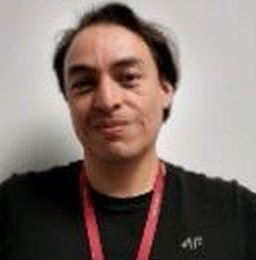
National Center for Nuclear Research
Otwock-Świerk, Poland
Advanced continuum theories
Dr. hab. F. Javier Dominguez achieved his PhD in Computational and Applied Physics with Summa Cum Laude honors at the National University of Mexico (UNAM). During his doctoral and postdoctoral studies, he joined The Institute for Advanced Computational Science at Stony Brook University, where he focused on modeling plasma-material interactions in tokamak plasmas, collaborating with the Princeton Plasma Physics Laboratory in the USA. Before joining the National Centre for Nuclear Research (NCBJ) in Poland, he was the recipient of the A. von Humboldt Research Fellowship and a Siemens Foundation scholarship at the Max Planck Institute for Plasma Physics in Germany. During this period, he created the innovative FAVAD software workflow using machine learning methods to characterize and visualize defects in damaged materials. Notably, FAVAD won the IAEA challenge, showcasing its excellence. In 2023, he attained the title of doctor habilitus (D.Sc.) in physics and an associate professor position at NCBJ. He's been invited to speak at institutions like Aalto University, Karlsruhe Institute of Technology, University of Helsinki, VTT, IPPT, and AGH University. Within NCBJ, his primary research focus on developing multi-scale numerical models seeking to understand how single crystal materials and high-entropy metal alloys respond under extreme conditions, such as high temperatures and irradiation doses. The overarching goal is to engineer and design materials suitable for applications in fusion, fission, and various industrial sectors. Dr. Dominguez actively participates in platforms like the EERA JPNM, EuroFusion, INNUMAT project, Humboldt Foundation, and EuMINe COST ACTIONS.
Deciphering the plasticity mechanisms in novel alloys is crucial for optimizing their mechanical properties. This study employs a comprehensive series of machine-learned molecular dynamics (ML-MD) simulations to investigate the nanomechanical response of single crystals in BCC W-based and FCC Ni- based solid solution alloys by nanoindentation test. We analyze dynamic deformation processes, defect nucleation, and evolution, alongside concurrent stress–strain responses. Additionally, atomic shear strain mapping provides insights into surface morphology and plastic deformation. In BCC metals, the introduction of Mo, Ta, and V atoms into the W matrices induces lattice strain and distortion, enhancing material resistance to deformation. This impedes dislocation mobility, especially for dislocation loops with a Burgers vector of 1/2⟨111⟩. Furthermore, we explore the influence of Ta, V, and Mo concentrations in W alloys, focusing on twinning and anti-twinning mechanisms during nanoindentation, contributing to material hardening.
For FCC Ni-based alloys, we observe significant hardening effects due to the presence of Fe, Cr, and Co in the samples. For this case, experimental load–displacement data show qualitative agreement with MD simulation results, providing strong evidence that the main strengthening factors are associated with sluggish dislocation diffusion, reduced defect sizes, and the nucleation of tetrahedral stacking faults. In this context, interstitial-type prismatic dislocation loops, mainly formed by Shockley dislocations, are nucleated during the loading process. Their interaction leads to the formation of diamond-shaped stacking faults, primarily created by ⅓⟨100⟩ Hirth dislocation lines. The observation of both types of defects coexisting in the same plastic deformation zone is consistent with both approaches. Reported mechanical data, measured experimentally and interpreted numerically, also align with microstructural SEM and TEM investigations. Throughout this discussion, the highlights of the advantages and limitations of both conventional interatomic potentials and machine-learned models when simulating nanoindentation tests will be presented and discussed.

1Institute of Fundamental Technological Research, Polish Academy of Sciences, Warsaw, Poland
Nanomaterials, nanotechnology, atomistic, nanoscale and multiscale modeling
Institute of Fundamental Technological Research, Polish Academy of Sciences, Warsaw, Poland
Metal oxides, particularly superparamagnetic iron oxide nanoparticles (SPIONs) and SPION-based materials, are being widely studied in many fields, from biomedical applications to improving the mechanical properties of composites. Due to their unique magnetic properties, they offer a broad spectrum of properties that can improve the physicochemical properties of a wide variety of materials in both solid and liquid states. Their application depends on size, shape, organic or inorganic surface coatings, and magnetic properties, which can vary depending on the synthesis method. Here, the role of experimental conditions during the synthesis and surface modification of SPION and SPION-based materials and their impact on potential applications like the change of microstructure of the resin-based composites filled with metal oxide fillers will be presented. Since the role of these materials in composites can also be dependent on the conditions of post-synthesis sample treatment, such as drying, particle concentration, media viscosity, vapor pressure, solution surface tension, temperature, pressure, and even the presence of a magnetic field, the influence of these conditions will also be discussed based on the experimental results obtained for magnetorheological fluids and magnetic composites and nanocomposites containing functional metal oxides.
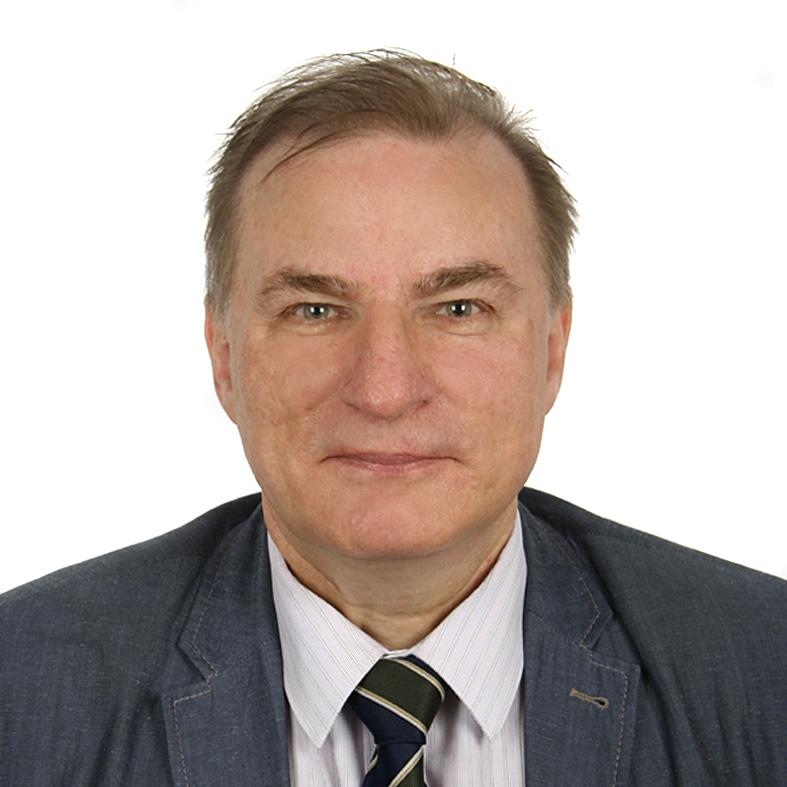
Institute of Building Engineering, Poznan University of Technology, Poznań, Poland
Computational and experimental mechanics in engineering applications
The contribution is concerned with the development, testing and modelling of skeletal structural systems that are exposed to earthquake loading or other dynamic loads. We consider the skeletal structural system which is equipped with shape memory alloy elements that are capable of dissipating energy and damping out vibrations. Shape memory alloys are materials that may undergo large deformations which disappear directly after removal of loads (pseudoelasticity, superelasticity) or upon an additional heating (shape memory effect), as a result of martensitic phase transformation [1-4]. The role of dissipating and absorbing the energy induced in the system by ground motions may be played by some structural members or devices made of pseudoelastic shape memory alloys which exhibit characteristic flag-shaped hysteresis loops. This structural design with a damping mechanism provides passive motion control. The motion of such a continuous structural system is governed by partial differential equations supplemented by inequality constraints which express the martensitic phase transformation criteria. The constraints are imposed on the phase transformation driving force and its thermodynamically conjugate variable (volume fraction of martensite) that describe the reversible transformation process austenite-martensite-austenite, which finally leads to the hysteresis loops. The finite element method is used for the space discretization of the continuous skeletal structural system. The hysteretic behaviour in time of the structural system is determined incrementally by solving a sequence of complementarity problems. The obtained results of numerical simulations will be presented which demonstrate the behaviour and damping effectiveness of the proposed structural design.
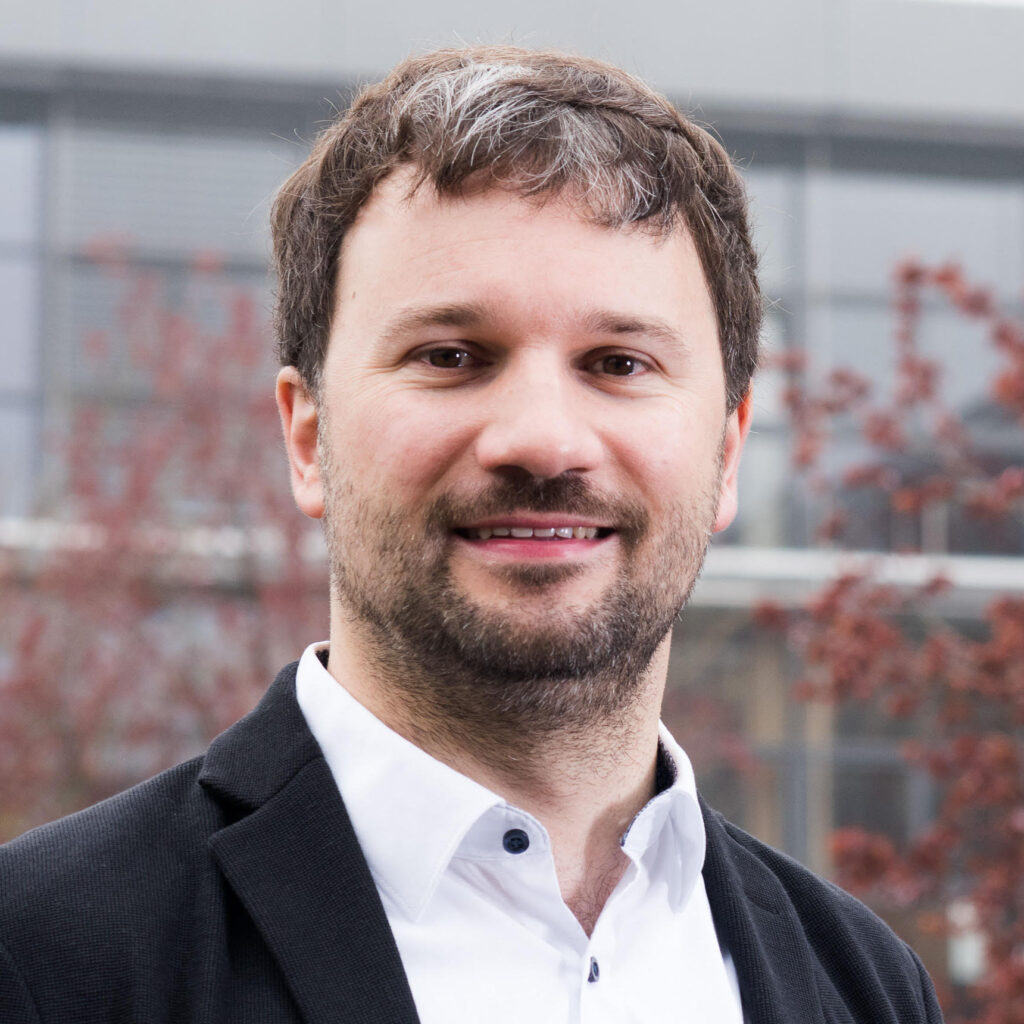
University of Kaiserslautern-Landau, Germany
Current Trends in Computational Solid Mechanics
Wolfgang Dornisch is a Full Professor for Engineering Mechanics at the University of Kaiserslautern-Landau. Between 2019 and 2024, he was a Full Professor for Structural Analysis and Dynamics at BTU Cottbus-Senftenberg. He obtained his Ph.D. at RWTH Aachen University with a work on isogeometric shell analysis and patch coupling. The research interests of Wolfgang Dornisch include shell elements, mortar methods, phase field methods, methods against locking, integration methods, structural optiimization and material modeling.
In standard finite element methods the time to solve the linearized system of equation constitutes the largest part of the total computational costs. In isogeometric analysis (IGA), the higher complexity of the basis functions typically yields solution costs and costs for assembly (including numerical computation of element matrices), which are in the same order of magnitude. Thus, considerable savings are possible if efficient numerical integration methods are used. The first contribution about integration methods for IGA is, where amongst others the use of reduced Gauss integration was shown to be almost as accurate as full Gauss integration at significantly reduced costs. Later, optimal integration was proposed, where the integration rule is computed from a nonlinear system of equation for each specific problem. Basing on, we will provide functions which allow a direct usage of this method both in Matlab and in Fortran. Furthermore, efficiency studies are provided for 2D plane stress elements and the shell formulation in Matlab and Fortran, respectively. Besides standard benchmarks, we will also show a very demanding example from with a highly changing curvature in order to compare the integration rules in the case of a higly nonlinear Jacobian. The results show that the total computational costs of IGA shell computations can be significantly reduced by using optimal integration.
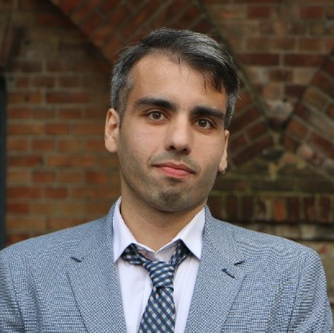
Institute of Fundamental Technological Research (IPPT), Polish Academy of Sciences in Warsaw, Poland
Contact and interface mechanics
Mohsen Rezaee Hajidehi is currently an assistant professor in the Department of Mechanics of Materials at the Institute of Fundamental Technological Research (IPPT), Polish Academy of Sciences in Warsaw, Poland. He earned his PhD in Civil Engineering from the University of Palermo in Italy in 2018 and has been at IPPT since then. His research focuses on modeling martensitic phase transformation, phase-field modeling of microstructure evolution and functional fatigue of shape memory alloys.
Stress-induced martensitic transformation in polycrystalline shape memory alloys (SMAs) typically initiates via deformation instability in the form of localized martensite bands and progresses via the propagation of the instabilities in the form of patterned transformation front that mediates austenite and martensite domains. In view of the high strain incompatibilities that exist within the austenite–martensite interface region, large local stresses develop that can accelerate the generation of microstructural defects, such as dislocation slips and stabilized martensite, and thereby, influence significantly the functional/structural fatigue of the material [1]. The phenomenon of return-point memory observed during the subloop deformation of a partially-transformed SMA specimen is a clear manifestation of the interaction between structural instabilities of phase transformation and material functional degradation [2]. The present study aims to elucidate this structure–material interaction through modeling the return-point memory effect. A macroscopic model of functional fatigue is developed for this purpose. The model integrates the ability to capture the pseudoelasticity degradation, which is incorporated into the materials’ constitutive relations, and the ability to capture the transformation instability, which is incorporated through the gradientenhancement of the free energy function. The model is then formulated in the framework of the energy minimization principle [3]. As an illustrative application, we first examine the transformation behavior of a NiTi wire subjected to nearly isothermal tension with nested subloops. Subsequently, with the aim to underline the intertwined evolution of localized phase transformation and transformation-induced plasticity and its implications on the return-point memory effect, we extend the analysis to a NiTi strip subjected to different loading programs.
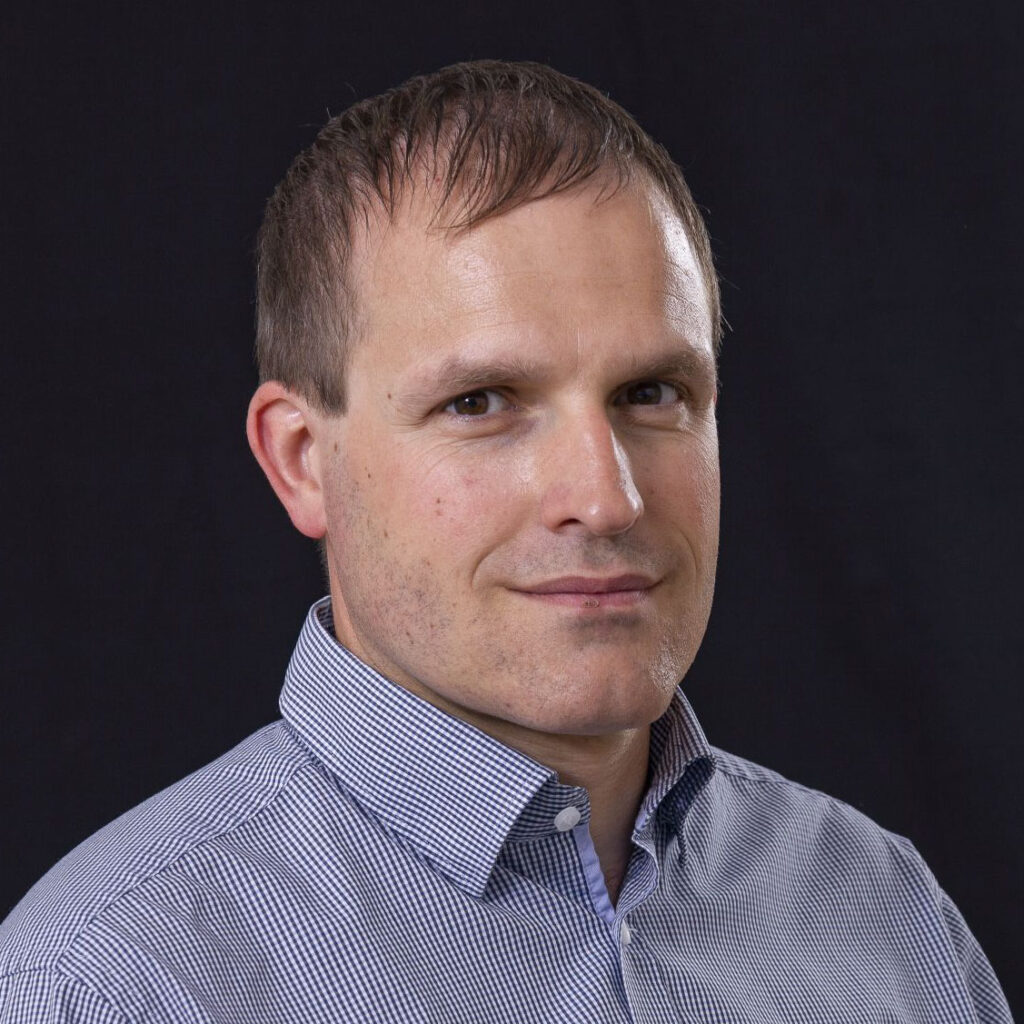
Technische Universität Dresden, Germany
Experimental mechanics
Thomas Schubert is a research associate at the Institute of Concrete Structures (IMB) of TUD Dresden University of Technology. He obtained a master’s degree in civil engineering at HTWK Leipzig and in computer-aided engineering at the University of the West of Scotland. Since 2021 his research focuses on single and multiple impact events of hard and soft impacts on reinforced concrete structures. Before his research career, he worked in the nuclear industry for more than ten years and gained experience on a large number of civil engineering projects, focussing on structural design and safety assessment considering external hazards like earthquake and aircraft impact. Due to his current work at IMB, further research interests of Thomas Schubert are broad and include experimental investigations, vibration analysis and simulation, material modelling of non-linear simulations, multiaxial loading of UHPC, structural health monitoring, fibre-optic sensing (FOS), as well as carbon-reinforced concrete strengthening and retrofitting.
The structural integrity of reinforced concrete structures (RC) protecting impotant infrastructure against external hazards is indispensable. If the protective structure is damaged by an impact event, such as crash or airplane impact, the question arises to which degree the reinforced concrete shielding still has its protective capability. This concerns both purely structural protection and protection against liquids penetrating the shielding. Due to the dimensions of the protective structures, it is usually difficult to perform real scale impact experiments, so in the past decades specimen with smaller geometries at medium scale have been used for investigations. Detailed investigations on the structural behaviour of RC members or RC plates subjected to impact loading have already been presented in Hering et al. [1] and Nerger et al. [2]. The investigation deals with the single and multiple impact events (first hard impact and/or subsequent soft impact) on a RC specimen. A description of the test setup and the test procedure as well as a presentation of the test results from impact tests will be provided. The penetration failure (spalling) of cube shaped specimen will be discussed in detailed, based on the impact energy reached in both impact events. In addition, the damaged specimens are to be examined by planar tomography to obtain the damage inside the specimen. The combination of detailed damage review and planar tomography investigation should enable a comprehensive understanding of the damage to the RC specimen. Furthermore, the experimental program is presented, in which the damaged RC specimens are to undergo a test to investigate the key question of how much liquid media, such as water and kerosene, passes through the damaged and cracked RC structure.
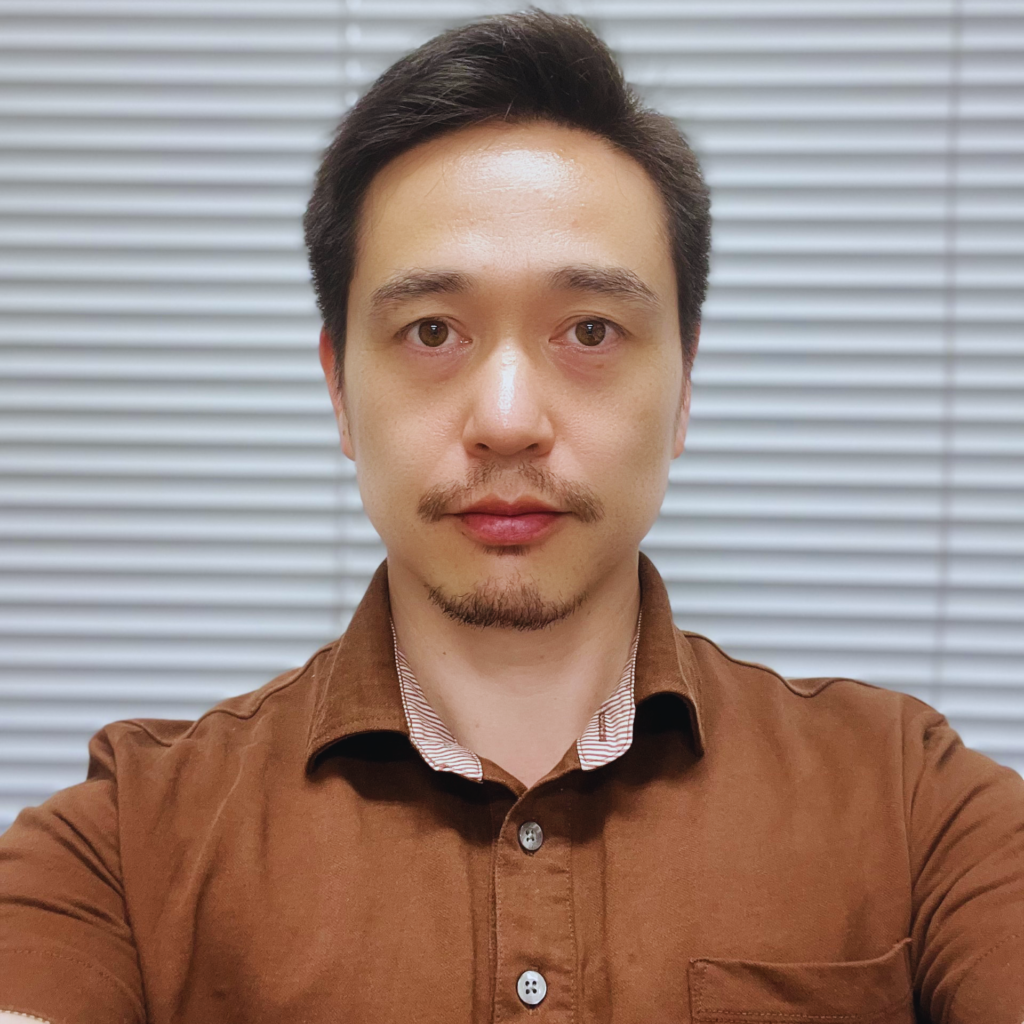
Meiji University, Kawasaki, Japan
Experimental mechanics
Shuichi Arikawa is an associate professor in the Department of Mechanical Engineering Informatics at Meiji University. He received his Ph.D. in Materials Design Course from Yokohama National University in 2009. He worked at the Department of Mechanical Engineering, Aoyama Gakuin University from 2010 to 2014. He has opened his laboratory, Materials System Lab., in 2015 at Meiji University. His research interests include materials science, mechanics of materials, and optical measurements. Recent topics lie in investigations of materials’ deformation and fracture mechanisms, developing smart materials, and improving measurement accuracy of digital image correlation method and laser speckle interferometry.
Recently, composite materials and bonded materials are widely used. Such materials contain interfaces of dissimilar materials. The fracture of the dissimilar material interfaces causes the fracture of the composites and bonded materials. Therefore, to know the fracture mechanics parameters of the interfaces contributes the estimation of the fracture of composites and bonded materials. However, dynamic loadings often applied to such materials, nevertheless the identification of fracture mechanics parameters under dynamic phenomena is not easy. One of the relating research have been studied by Kojima et.al..
In this study, an identification method of crack tip position and fracture mechanics parameters of dissimilar material interface using a measured displacement field is proposed. The displacement field around the crack tip is measured by digital image correlation method using images captured by a high speed camera. The crack tip position and the stress intensity factors of mode I and II are identified by solving inverse problems using least squares method with comparison of the measured data and the theoretical displacement field in a circular shaped subset set along the interface.
A dynamic shear test was conducted to a three layered specimen consisting of an aluminium center layer and PMMA side layers. The dynamic loading was applied to the specimen by split-Hopkinson pressure bar method. Images of the deformation and the fracture behavior were captured by a high speed camera with frame rate of 1Mfps. The displacement fields were obtained by digital image correlation method. The crack tip position and fracture toughness of mode I and II could be identified by the proposed method.
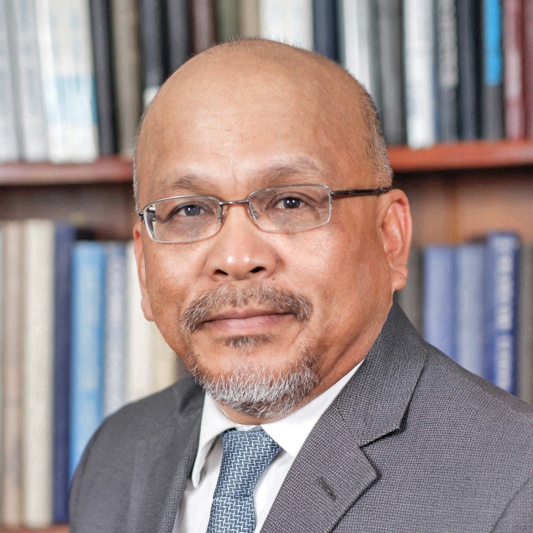
Colorado School of Mines
Golden, Colorado
Geomechanics and granular materials
Dr. Marte Gutierrez is the James R. Paden Distinguished Professor at the Department of Civil and Environmental Engineering at Colorado School of Mines (CSM). He has published over 370 papers in book chapters, journals, and conference proceedings, given keynote and invited lectures at several conferences, and has been responsible for more than US$ 25 million in research funding. Dr. Gutierrez is an Associate Editor of three international journals and a member of the Editorial Board of four other international journals. He is the recipient of a Fulbright Scholarship, the 2011 Geotechnical Research Medal from the UK’s Institute of Civil Engineers, the 2017 Applied Rock Mechanics Research Award and the 2020 Rock Mechanics Research Award both from the American Rock Mechanics Association, the 2016 Peter A. Cundall Honorable Mention Award, the Kwanghua Visiting Professorship from Tongji University, and four Best Paper Awards. Dr. Gutierrez’s main research interests are in Geomechanics for Energy, Environmental, and Transportation Sustainability.
A simple constitutive model for loading-rate-dependent shale undrained shear behavior is proposed. The model is based on an extensive characterization of the undrained triaxial compression behavior of shale loaded at different axial strain rates up to the strain softening regime. The model is based on a combination of viscoelasticity and damage mechanics and is formulated to predict the brittle behavior of shales from the pre-peak elastic stage to failure and the post-peak strain softening regimes. Nonlinear stress-strain behavior, shear failure, and strain softening are attributed to damage due to the growth of fractures in the shale. Damage is described by a scalar variable damage D and is assumed to commence when the stress-strain behavior deviates from linear elasticity. Given the randomness in the sample heterogeneities that lead to fracture formation and propagation, the damage is modeled statistically using Weibull’s probability distribution as a function of the strain level. An elastic modulus from a superposition of static rate-independent Young’s superposition and a rate-dependent viscous Young’s modulus completes the viscoelastic damage model. The undrained viscoelastic damage model is extended to full triaxial compression loading condition by adding equations for volume change from compression and dilatancy. The model is further extended to account for anisotropic shear response by using a tensorial instead of a scalar damage parameter. The tensorial damage parameter, applied in the deviatoric stress space, preserved the simplicity of the model. The model adequately represents the complete stress-strain response of shale, including strain softening at different axial strain rates, and accurately predicts the strain rate- and confining-pressure-dependent and anisotropic shear strength of shale. Finally, the model is shown to be thermodynamically consistent in terms of the use of the strain equivalence principle and in terms of energy dissipation following the Clausius-Duhem inequality.
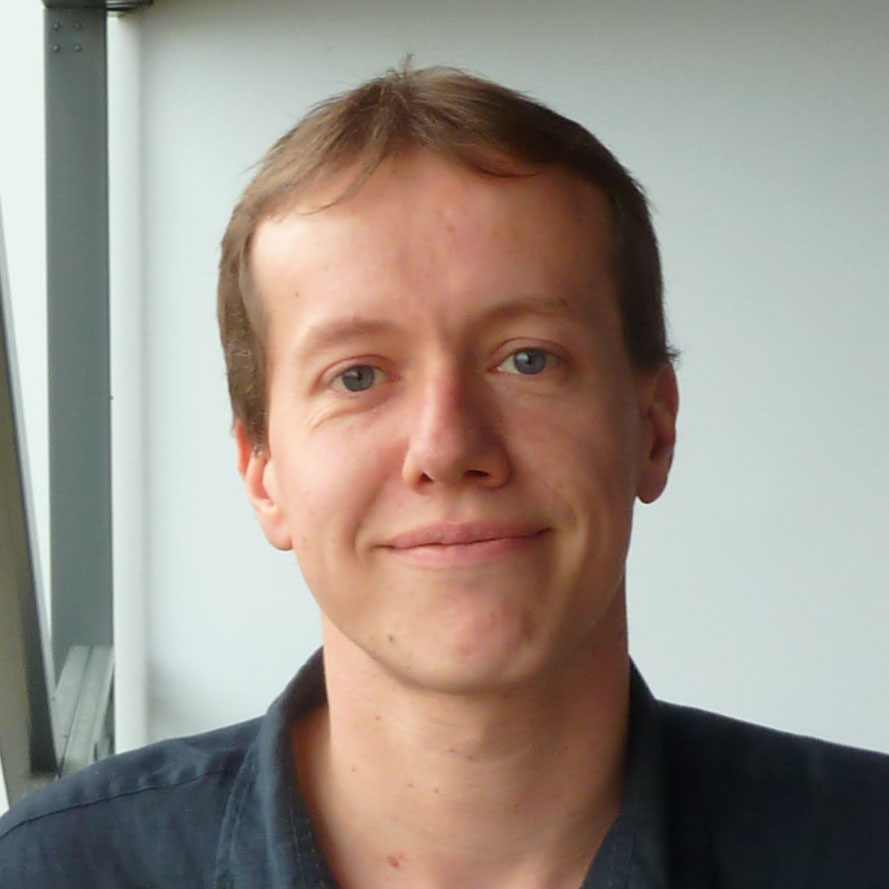
ENSTA Bretagne
Brest,
France
Micromechanics of heterogenous and multi-component materials
Nicolas Jacques is associate professor at ENSTA Bretagne (Brest, France) and member of the Dupuy de Lôme Research Institute (IRDL). His research topics are related to the modelling of high strain-rate phenomena, including damage and fracture, plastic flow instabilities and shock wave propagation, and of fluid structure interactions.
The understanding and modelling of the behaviour of heterogeneous materials, such as porous and cellular solids, under dynamic loading conditions is an important issue for several applications, like the safety of pressurized structures, and the resistance of protective structures to ballistic impacts and explosions. Under dynamic loadings, the materials may experience very high strain rate. This may lead to very large accelerations at the scale of the microstructure and small-scale inertia effect. The aim is the presentation is to analyse and illustrate the influence of microscale inertia on the dynamic response of voided solids. Two problems will be considered. In both cases, dynamic homogenisation techniques have been employed to link the macroscopic response of the materials to their microstructural features.
The first problem is the failure of ductile materials by micro-voiding. A micromechanical ductile damage model has been developed. This model can be seen as an extension of Gurson-type approaches to dynamic loading conditions. The obtained results show that microinertia influences the development of damage. Moreover, microinertia leads to a regularizing effect that limits the mesh sensitivity of the simulations.
The second problem is the response of foams (highly porous solids) under shock compression. An important role of microinertia was also found. In particular, Microinertia affects the shock response of the material (Hugoniot relation) and the structure of shock waves.
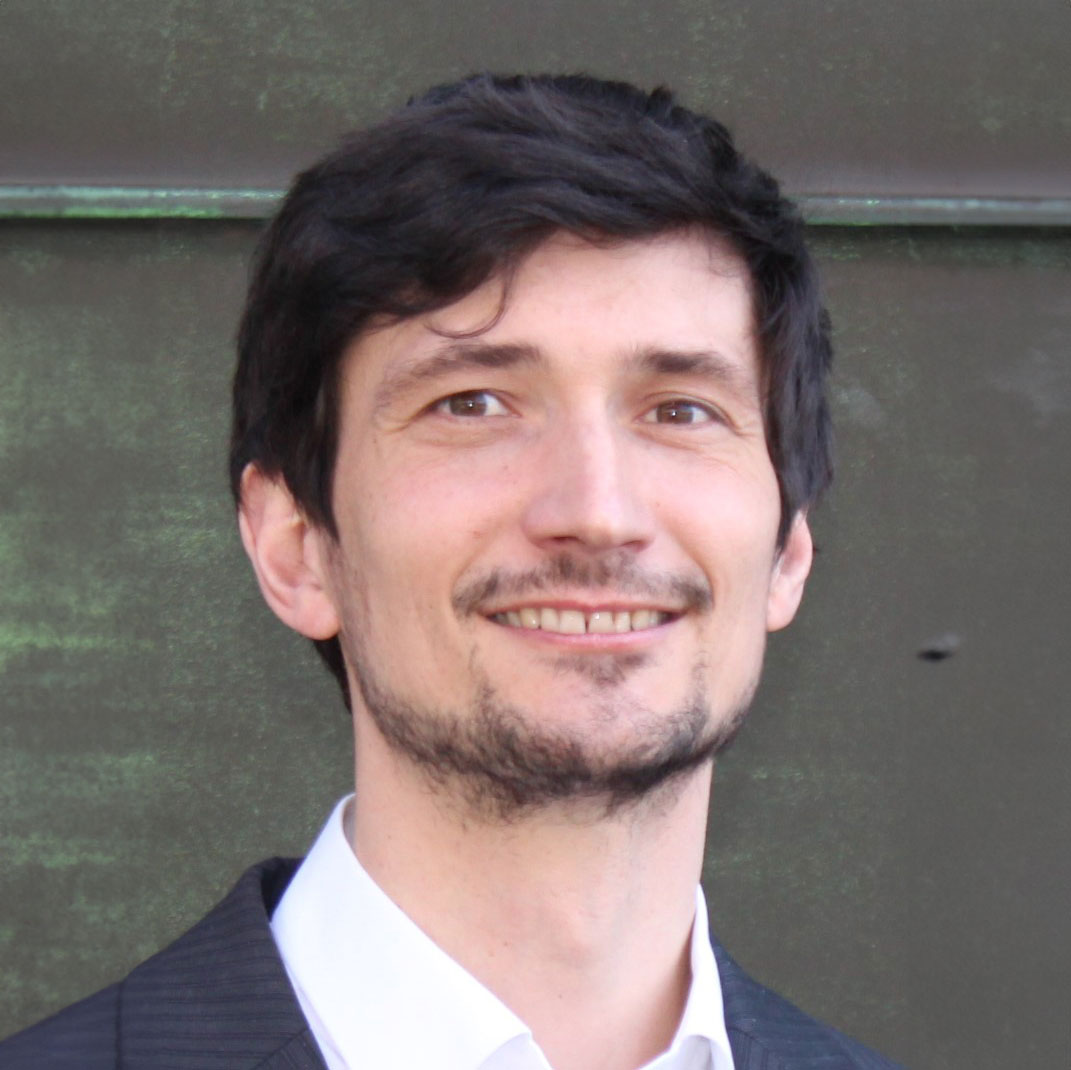
Brandenburg University of Technology Cottbus - Senftenberg, Germany
Micromechanics of heterogenous and multi-component materials
Geralf Hütter is a visiting professor at Brandenburg University of Technology Cottbus-Senftenberg. He studied Mechanical Engineering at TU Dresden. He received his doctorate from the TU Bergakademie Freiberg in 2013 and habilitated in 2019. His research interests lie in the fields of multiscale simulations, methods of machine learning in mechanics, fracture and damage mechanics, as well as gradient-enhanced and non-local continuum theories.
Nowadays, numerical multi-scale methods are established as an indispensable tools in scientific research and industrial applications, offering predictive insights into the effective behavior of structural components based on microstructural information. The complexities of nonlinear material behavior demand the simultaneous solution of coupled boundary value problems at both microscopic and macroscopic scales. The most flexible approach for this purpose is the utilization of the finite element method on both scales, known as the FE² method [1]. Yet, the flexibility and generality of this approach are accompanied with significant computational costs, having caused the exploration of various techniques to mitigate these expenses. In particular, there has been considerable research effort directed towards alternative neural network (NN)-based surrogate models and reduced-order FE²-models (ROM FE²) [2][3]. Both types of models rely on training data derived from expensive fully-resolved microscale simulations. While NN-based models require augmentation to account for physical constraints, ROM FE² models provide variational approximations to the microscale problem, thus inheriting the fundamental physical behavior, albeit at higher computational costs compared to surrogate models. These costs encompass not only the online computational time during the actual structural simulation but also the so-called offline costs associated with generating the training data.
The present contribution shows how both offline and online costs of ROM FE² simulations can be reduced drastically by combining it with a monolithic solution strategy and a clustered training strategy [4]. Furthermore, the impact of different hyper integration schemes is explored. Certain plane and 3D examples featuring highly nonlinear, irreversible materials demonstrate the broad applicability of the method with minimal adaptation effort to specific problems.
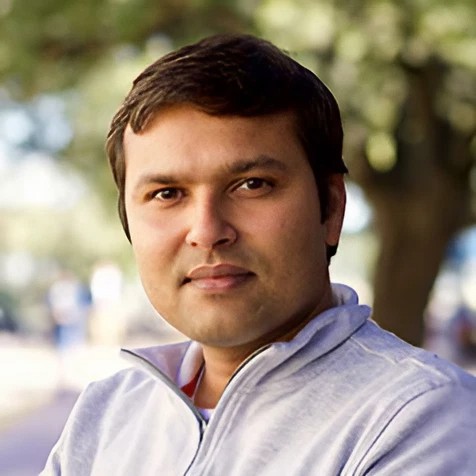
Texas A&M University, USA
Micromechanics of heterogenous and multi-component materials
Ankit Srivastava is currently an Associate Professor in the Department of Materials Science & Engineering at Texas A&M University. He was a postdoctoral research fellow at Brown University from 2013 to 2015. He received his Ph.D. in Materials Science & Engineering in 2013, MS in Physics also in 2013, and MS in Materials Science & Engineering in 2011 all from the University of North Texas. Before starting his graduate studies, he worked at the Bhabha Atomic Research Centre in India from 2007 to 2009. His research interests lie within the Mechanics of Materials, focusing on understanding structural materials’ deformation and failure mechanisms. He is a recipient of the 2022 and 2021 AISI Finalist Medals, the 2022 TMS-AIME Robert Lansing Hardy Award, and the 2022 ASME Sia Nemat-Nasser Early Career Award, among others. He currently serves as the Associate Editor for the Journal of Engineering Materials and Technology and Mechanics of Materials.
Atomically layered ternary carbides and nitrides, referred to as MAX phases, combine some of the best attributes of both metallic and ceramic materials. These materials are lightweight, elastically stiff, thermodynamically stable, refractory, damage-tolerant, pseudo-ductile, and machinable. The key to their properties lies in their layered hexagonal crystal structure with strong intralayer and weak interlayer atomic bonds. Several recent studies have shown that the grain-level deformation and failure mechanisms of MAX phases depend on both the crystallographic orientation and deformation constraint of the grains. Expanding on these studies, we conducted two sets of small-scale tests to further analyze their deformation and fracture response. The first set of tests involved free-standing micro-pillars, unconstrained micro-walls, and constrained micro-walls. The results of these tests show that, depending on the level of constraint, the material either easily cleaves or undergoes kink-band instability. The second set of tests involved notched micro-cantilever specimens. The results of these tests show that the effect of a notch in these materials is not always intuitive, and despite the imposed loading conditions promoting mode-I notch opening in these tests, the initiation and propagation of cracks depend on the initial crystallographic orientation of the specimens. We will present the results of these tests and crystal plasticity finite element simulations, focusing on correlating the effects of imposed deformation constraints and crystallographic orientation on the onset of instability-induced deformation and crack growth response in these materials.
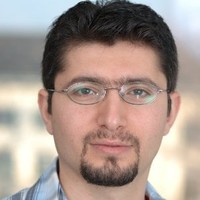
Technion - Israel Institute of Technology,
Haifa,
Israel
Multiphysics and coupled problems
Technion – Israel of Technology, Israel
Electroactive polymers (EAPs) are referred as ”Smart materials”, which are able to convert electrical energy to mechanical work. EAPs are applicable in number of fields, such as robotics, optics, acoustics and biomimetics. The mode of action in EAPs actuators is principally based on Coulomb forces generated by an electric field, which causes the polymer membrane to contract in the thickness direction and consequently lead to lateral expansion. However, a high driving electric field is required for actuating the isotropic electric EAPs that may cause electro-mechanical instability and/or electric breakdown. Promising experimental works suggest that this limitation may be overcome by making electroactive polymer composites (EAPCs), which are flexible and have a high dielectric modulus.
With regards to the computational modeling of EAPs, a numerical scheme has been developed using a reduced mixed finite-element formulation for simulating the nonlinear response of isotropic EAPs. On the other hand, computational homogenization is needed for the simulation of EAPCs. The aim of the present work is to provide an understanding of the mechanisms governing the electromechanical response of EAP and EAPCs undergoing large deformations. To this end, a multiphysics computational framework including the electro-mechanical coupling and the viscoelastic properties of the constituents will be presented. In the context of computational homogenization, the reduced mixed finite element formulation, which eliminates the volumetric locking pathology and circumvents the static condensation as it relies solely on the modified deformation gradient, is adopted to both he macro-scale and microscale. This formulation is denoted by MFE.
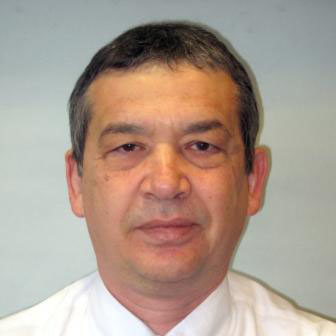
Technion-Israel Institute of Technology, Haifa
and Shenkar-Engineering.Design.Art, Ramat Gan, Israel
Nonlinear dynamics, vibrations and control
Yoram Halevi is currently the Dean of the Faculty of Engineering at Shenkar College, and a Professor Emeritus, formerly the James H. (Jimmy) Belfer Chair holder, in the Faculty of Mechanical Engineering at the Technion, Israel Institute of Technology. He received his B.Sc., M.Sc. and D.Sc. degrees in Mechanical Engineering from the Technion, in 1974, 1981 and 1985 respectively. He held visiting positions at Penn State, Ohio State and Virginia Tech in the US and in CNR-ITIA in Milan, Italy as well as short term visits to other universities and research institutes. His public activities include serving as President of Israel Association of Automatic Control (2000-2004), Chair of ASME Europe conference committee (2009-2011), Dean of the Division of Continuing Education and External Studies (2013-2014) and Dean of the Faculty of Mechanical Engineering, Technion (2014-2018). His current research interests are in control of flexible structures, optimal control of redundant actuation systems, model order reduction and model updating. Yoram Halevi is a Fellow of ASME.
Flexible structures appear in diverse engineering applications, ranging from small scale actuators andsensors to large mechanical, space and even civil engineering systems such as bridges and buildings. Itis worth noting that flexible is a relative term, depending both on the excitation bandwidth and theaccepted level of vibration. Tighter performance requirements in terms of speed and accuracy requiretherefore including the flexible modes in models of systems that could otherwise be considered as rigid.In a series of publications [1-3] by the second author and his research group a comprehensive modelingand control method for flexible structures was presented. The Laplace based model is derived directlyfrom the partial differential equations that govern the structure. It is thus an exact, infinite dimensionLaplace transfer functions, from point application to point measurement. The transfer functions have aclear interpretation from physical point of view. The different terms it it represent the travelling wavesin the system and their reflections from the boundaries. This exact, infinite dimention model is incontrast with the finite element method (FEM) approach which can be interpreted as a finite dimensionapproximation based on the the standing waves approach. The special structure of the model lead to adedicated control low that completely eliminates vibration in finite time and is therefore called absolutevibration suppression (AVS)Two assumptions were made in all previous research publications. One is that the actuation and themeasurement are at a single point. In practice the actuation, and to a lesser degree also the measurement,is distributed on an area that might not be negligible. The second assumption is that of a single controlaction that is applied at the boundary. Both assumptions are removed in this work and the general caseis of multiple actuators with nonzero area is investigated. The correct extension to AVS control, whichmaintains its fundamental properties was formulated and analyzed.
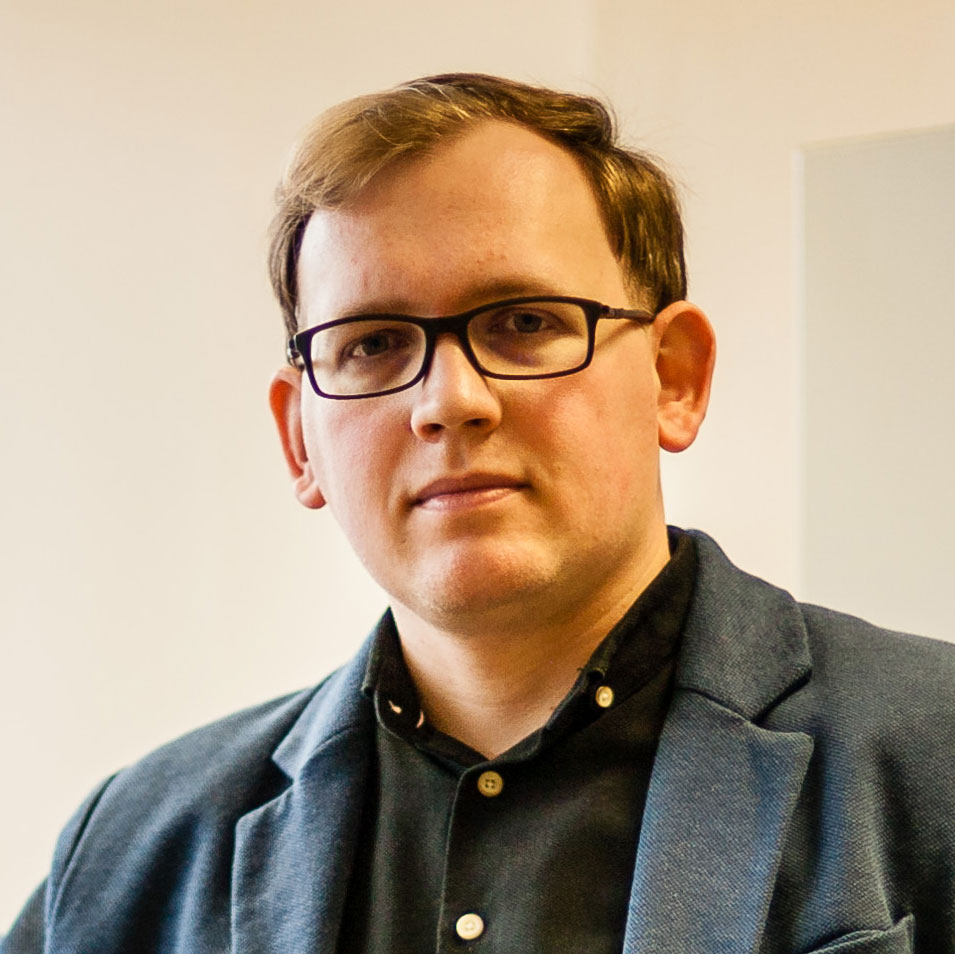
Institute of Machine Design Fundamentals,
Warsaw University of Technology, Warsaw, Poland
Nonlinear dynamics, vibrations and control
Mateusz Żurawski is a Research Associate at the Institute of Machine Design Fundamentals at Warsaw University of Technology (WUT). He earned a Master’s degree in Mechatronics from the Faculty of Automotive and Construction Machinery Engineering at WUT. His doctoral research primarily focused on prototyping, modeling, and controlling adaptive vibration dampers, with additional interests in smart materials and structures. In 2023, he received his PhD in Mechanical Engineering.
For the past two years, he has continued experimental and numerical investigations in areas related to his doctoral work, with a particular emphasis on implementing artificial intelligence algorithms in the modeling and control of mechanical systems. His research mainly involves proposing and applying various neural network architectures in mechanical engineering. In addition to his research, his main interests include data processing, analysis, and programming.
The paper presents results of the theoretical and experimental studies of the Adaptive Tuned Particle Impact Damper – ATPID [1]. The test stand consists of a cantilever beam subjected to kinematic excitation, with an ATPID damper attached to its free end. This device allows real-time adaptation to various excitation conditions by changing the container volume, thus ensuring the most effective vibration damping. The main issue of this paper is proposing a method that would enable the fast determination of the optimal damper height. Firstly, the results of the classical algorithm based on iteratively solving the equations of motion of the mechanical system are discussed. Such a method of searching through a wide range of data is inefficient due to the time-consuming simulation. This is a crucial aspect in the light of adaptive damper control. Therefore, an alternative method based on the application of artificial intelligence has been proposed. Artificial Neural Network (ANN) allows to replace the classical theoretical model. During the machine learning, over 14,000 training data have been prepared, containing information about the basic mechanical system, excitation and the ATPID damper. Hyperparameters of the ANN structure have been optimized. It turns out that the use of a neural network effectively captures the dynamics of the 2-DOF system. Fig. 1 shows the real and predicted (by ANN) values of the system vibration response amplitude for various heights of the ATPID damper and particle of different masses. The main advantage is that the use of Artificial Neural Networks significantly reduces the time required to determine the optimal damper height compared to the classical method.
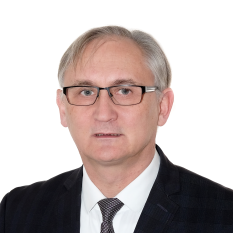
Cracow University of Technology, Poland
Plasticity, damage and fracture mechanics
Professor Błażej Skoczeń (full professor 2008) is working at the Cracow University of Technology (CUT) since 1984. In 1992 he became an intern at the Vienna University of Technology and later on, in 1993, at the Toyohashi University of Technology in Japan. In 1994, he took an EU founded internship at the European Organization for Nuclear Research (CERN). During 1995-2005 he became an associate and scientific staff at CERN, where he headed a team working on the LHC project. In 2006, he was appointed visiting professor at IFMA Clermont-Ferrand. During 2009-2017 he acted as head of Institute of Applied Mechanics at CUT. In 2013 he became member of the Committee of Evaluation of Scientific Units in Poland, and in 2019 he was appointed chairman of the Science Evaluation Committee. He is member of editorial boards of two JCR scientific journals. In 2017 he was appointed member of General Assembly and Board of Directors of CISM, Udine. In 2020 he became corresponding member of Polish Academy of Sciences, and corresponding member of Polish Academy of Arts and Sciences. Since 2022 he is in charge of Research Centre – Laboratory of Extremely Low Temperatures at CUT. He is author of more than 150 publications, reports and scientific studies, including 3 individual monographs. His research is focused on the phenomena occurring at temperatures close to absolute zero and constitutive modelling of materials, including plastic flow instabilities, phase transformations, evolution of microdamage and fracture.
Metals and alloys (e.g. stainless steels) characterized by the fcc lattice are massively used in the cryogenic applications. Depending on the material, various phenomena may occur at cryogenic temperatures, including intermittent plastic flow (IPF), plastic strain induced fcc-bcc phase transformation, evolution of microdamage, as well as low temperature creep and fracture. In the light of thermodynamic instability, resulting from 3rd thermodynamics principle, the thermo-mechanical coupling strongly affects deformation of materials operating at temperatures close to absolute zero. IPF (serrated yielding) represents oscillatory mode of plastic deformation and reflects discontinuous nature of plastic flow (in terms of dσ/dε). It consists in frequent abrupt drops of stress as a function of strain during kinematically controlled loading. There is enough experimental evidence to back the hypothesis, that the mechanism of IPF is related to formation of dislocation pile-ups at the internal lattice barriers (e.g. Lomer-Cottrell locks) and formation of twin boundaries within the macroscopic shear bands. Multiscale constitutive model of IPF [1] involves microscopic approach based on the analysis of evolution of dislocations density and formation of dislocation pile-ups on the lattice barriers. The plastic strain induced phase transformation, consists in rapid change of crystallographic lattice from fcc to bcc. In the metastable stainless steels it is related to TRIP effect, resulting in the uniform, unrecoverable, macroscopic strain. The constitutive model involves the mechanism of strain hardening with two fundamental effects taken into account: interaction of dislocations with the inclusions of secondary phase, and evolution of tangent stiffness of two-phase continuum resulting from evolving proportions between both phases. Third phenomenon is related to evolution of microdamage, including radiation induced damage. Even if the nature of mechanically induced damage (micro-voids and micro-cracks) is different from the nature of radiation induced damage (clusters of vacancies), evolution of both of them is described in the framework of CDM. Finally, fracture is one of the key issues for metastable materials operating at extremely low temperatures [2]. The major problem of the Irwin model consists in the fact, that it is based on the elastic – perfectly plastic approach. Thus, an extrapolation of the Hutchinson model to the version including the phase transformation is developed by means of the tangent stiffness operator, obtained from the constitutive model of the plastic strain induced fcc-bcc phase transformation.
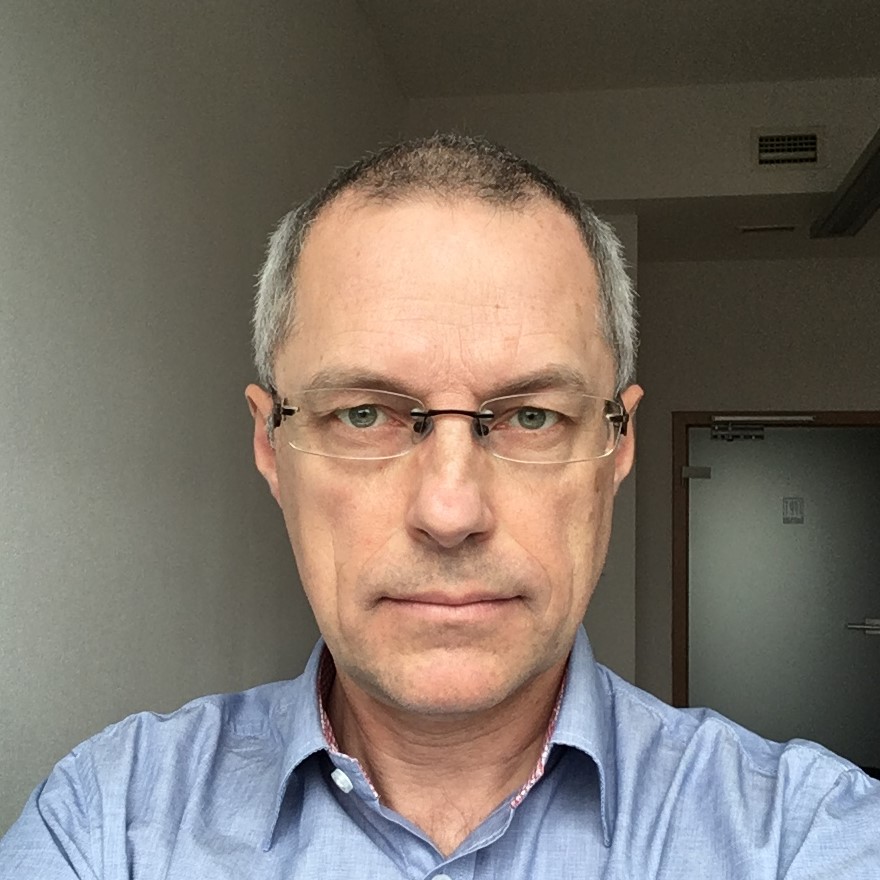
Institute of Fundamental Technological Research (IPPT), Polish Academy of Science in Warsaw, Poland
Plasticity, damage and fracture mechanics
Stanisław Stupkiewicz is a full professor at the Institute of Fundamental Technological Research (IPPT), Polish Academy of Science in Warsaw, Poland and head of the Department of Mechanics of Materials. He graduated from the Warsaw University of Technology in mechanical engineering (1989) and received his PhD (1996) and habilitation (2006) at IPPT. Since 2011 he is a full professor. In 2013, he spent one year in Italy as a visiting professor at the University of Trento. His research interests include micromechanics of interfaces and interface layers, size effects, multiscale modelling of shape memory alloys, phase-field modelling of microstructure evolution, constitutive modelling of contact phenomena, contact mechanics, plasticity, crystal plasticity, and computational mechanics. Since 2020 he is a corresponding member of the Polish Academy of Science. He is as an Editor of Mechanics of Materials, Section Editor of Archives of Mechanics, and member of the editorial board of Archive of Applied Mechanics.
Propagating instabilities are commonly observed in polycrystalline shape memory alloys (SMAs), in particular, in pseudoelastic NiTi alloys. These effects result from the non-monotonic (up-down-up) intrinsic material response, which leads to the strain localization and propagation of macroscopic phase transition fronts. The deformation pattern resembles then the L¨uders bands in plasticity, and the overall load–displacement response exhibits a characteristic plateau. To model the related effects, we developed a gradient-enhanced thermomechanical model of pseudoelasticity [1, 2]. In this model, the gradient of the volume fraction of the martensite phase is introduced into the free energy function, which provides the required regularization. By following the general approach [3], a micromorphic formulation is also used to facilitate the practical implementation of the model within the finite-element framework. The model includes a number of important features, notably the tension–compression asymmetry, anisotropy (transverse isotropy) of the transformation strain, and strain-dependent hardening/softening response. The model is formulated within the incremental energy minimization framework with full account of finite-strain effects. The model is able to describe several experimentally observed effects, such as the effect of the loading rate on the number of martensite bands in a dog-bone specimen under tension [2] and the formation of multi-prong interfaces in NiTi tubes under combined tension and torsion [2, 4]. Recently, we have also shown [4] that, upon applying realistic boundary conditions and considering residual stresses, the model is capable of predicting longitudinal localization bands in NiTi tubes under torsion-dominated loading, an effect that has been observed experimentally and has not been fully understood nor modelled to date.
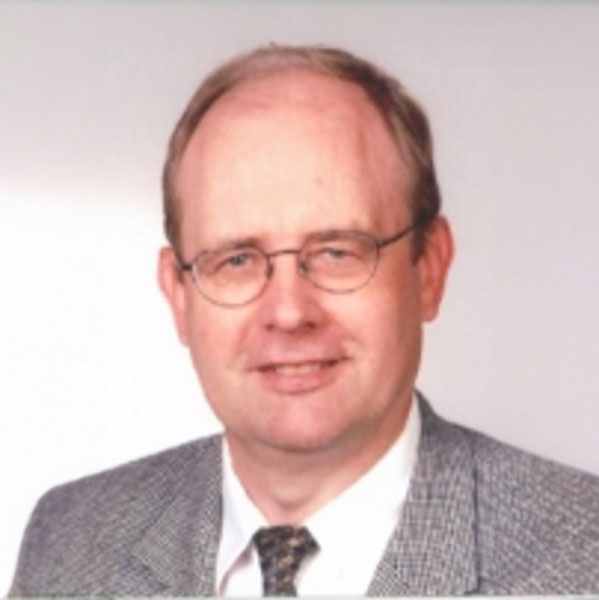
Technical University of Darmstadt, Darmstadt,
Germany
Shells, plates and beams
Prof. Gruttmann is a well renown specialist in computational mechanics. His research is mainly focused on structural problems, especially the finite element modeling of shells, plates and beams. For the list of his publications please see: https://scholar.google.de/citations?user=Y9C6oF8AAAAJ&hl=en
In this presentation a FE2 shell model for thin and thick shells is discussed. We propose a first order homogenization scheme for Reissner-Mindlin shells that couples the boundary value problems at the coarse and fine scale in a variational setting. The associated weak form is consistently linearized whereby the resulting nonlinear FE equations of both scales can be solved in different ways. As effective alternative to a nested iteration a simultaneous iteration procedure can be applied which also preserves quadratic convergence of Newton’s method.
When applying periodic boundary conditions to representative volume elements (RVEs) in three-dimensional bodies rigid body movements are generally prevented by prescribed displacements of the corner nodes. This is not possible in present case as it causes localized distortions at the corners of the RVE, which extend through the total thickness of the shell. Stress boundary conditions are existent at the bottom and top surfaces of the RVEs, whereas at the lateral surfaces periodic boundary conditions are used. Appropriate constraint equations are developed which prevent both rigid body movements and the dependency of the transverse shear stiffness on the RVE length. Two versions with 5 or 9 constraint equations are described. The side conditions are fulfilled applying the Lagrange multiplier method.
The first of all linear formulation is extended to finite strain problems introducing some transformation relations for the stress resultants and the material matrix. The transformations are performed at each Gauss point on macro level.
For a homogeneous plate or shell and linear elasticity the material matrix for the stress resultants must be decoupled with respect to the submatrices for membrane, bending and shear. This important test is passed by means of a homogeneous RVE. The considered linear and non-linear examples prove that the developed two–scale model is able to analyze the mechanical behavior of heterogeneous shell structures. We examine layered plates and shells and such with in-plane periodic structure.
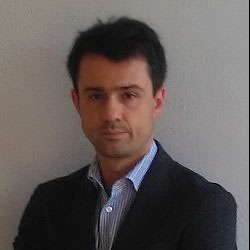
Politecnico di Milano,
Italy
Structural optimization and optimum material design
Politecnico di Milano, Italy
Wire-and-Arc Additive Manufacturing (WAAM) is a metal 3D printing technique that allows fabricating elements ranging from simple to extremely complex shapes. Among the others, layer-by-layer manufacturing can be used to produce plates of printed material which are found to exhibit significant elastic anisotropy, whereas dot-by-dot printing is employed to build lattices made of bars whose mechanical properties are affected by the fabrication direction.
Within this context, the design of WAAM components is addressed by formulating problems of structural optimizations that take into account peculiar features of the printing process. Topology optimization by distribution of anisotropic material is exploited to perform the simultaneous design of the shape and the printing orientation of stiff beams and I-beams conceived for production by layer-by-layer manufacturing. Shape optimization based on the force density method is implemented to design funicular geometries for fabrication of reticulated shells via dot-by-dot printing, accounting for manufacturing and failure constraints.
In both cases, the arising multi-constrained formulation of optimal design may be efficiently tackled through methods of mathematical programming. Applications are shown, pointing out the peculiar features of the achieved optimal layouts and of the proposed numerical methods.
